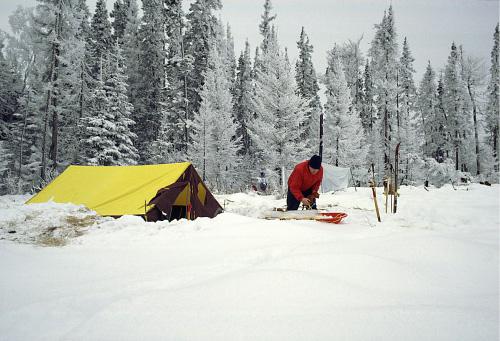Your Winter Camping Survival Guide
The idea of camping in the winter surrounded by snow and ice without a cozy cabin to spend the night might turn off some people who think it’s too extreme or difficult. The only thing you really need to do to make it as a winter camper is to prepare well and bring the right gear and tools.
Camping in the winter can be a fun activity and a great way to get some much-needed outdoors time during the months of the year where we end up spending the most time indoors.

Winter camping can be the perfect antidote to the hectic feeling of the holiday season. It’s quiet and tranquil in nature during the winter and you can make the most of your time and enjoy winter activities like cross country skiing, snowshoeing, or ice climbing.
Planning Your Trip
To help you develop a solid understanding of what you need to do to prepare for your trip you have to start with a plan. Research the areas you’ll be camping, the usual conditions and climate, and what route you’ll be taking for hikes. Ask yourself: what are my goals for the trip? What route will I be taking? Will I stick to the trails or go off them? What type of terrain can I expect? What is my mode of travel? Are there changes in elevation? What is my level of experience (and that of the group)?
From there, you can start to plan out what gear you need to bring, how much food to pack, and what type of thermal gear you need to have to make sure you are comfortable and careful. If you’re undecided about what thermal gear is right for you, then click here to learn more about the selection of thermal base layers, hats and gloves, socks, and more from Heat Holders. The great thing about these products is that you always know what you’re getting with the Thermal Overall Grade on products, which means you can be as prepared as possible for your winter camping excursion.
Insulation & Layers
Thermal insulation of clothing is related to the amount of “dead air space” between your body and the clothing itself. It’s that enclosed unit of air that gets heated up by the body keeping you warm. To provide this dead air space you need to wear layers of clothing where each layer provides a certain value of dead air space. When you layer, you can add or shed items of clothing to accommodate your activity levels and stay comfortable without sweating or getting too cold.
Meal Time
To cook hot meals and melt snow for water, you need to bring extra fuel for your gas stove. Think about your food in advance and plan to bring things like one-pot meals or just-add-water meals since they are easy and efficient. After all, it can be a bit of a challenge to cook something elaborate when your hands are wrapped up in gloves or mittens. With these tips in mind and the right kind of gear, you can make winter camping a real treat and enjoy yourself out in the snowy wild.
One last thing to keep in mind is the importance of staying hydrated on your trip! You may not realize it, but staying hydrated in cold temperatures can often be more difficult than warmer temperature trips where you’re naturally more inclined to drink water. Plus, in cold temperatures, water can freeze making it undrinkable! Always make sure you have drinkable water on you, and using an insulated water bottle can help ensure you stay hydrated.
